The Angelus Instrument de Vitesse and the Story of its Monopusher Movement
Taking a closer look at an absolutely handsome chronograph, powered by an important movement.

For watch enthusiasts like me and the rest of the team of MONO, the name Angelus is synonymous with splendid vintage chronographs. Yet, the modern side of the brand, which is under the umbrella of La Joux-Perret (and thus Citizen), was until recently fairly different. The resurrection of the brand in 2015, which was done alongside its sister brand Arnold & Son, gave birth to highly technical or contemporary-designed watches… Not entirely what we could have expected. But things have changed in the past couple of years, with the launch of the La Fabrique collection. Following the Massena LAB Chronographe Médical, Angelus recently treated us with a stunning vintage-inspired monopusher chronograph, full of charm and nostalgia, the Instrument de Vitesse. Time for us to take a closer look at this lovely watch, but also to talk about its movement… And there’s a lot to tell here.
Angelus is a name with great history and important watches. Founded in 1891 by brothers Albert and Gustav Stolz, the company quickly became renowned for developing and manufacturing interesting movements and timepieces, both for itself and for other brands. Angelus earned a reputation for creating exceptional chronographs, such as the first series wristwatch chronograph with a calendar (the famous 1942 Chronodato), the first wristwatch chronograph with a big date, the first wristwatch with alarm and date, the first automatic repeater wristwatch or the important 8-day hand-wound movement that powered multiple early Panerai watches. The company ceased operations in the late 1970s due to the quartz crisis.

The comeback was done with a polarizing watch, the U10 Tourbillon Lumière, a watch that didn’t have much in common with the vintage models, save for its complexity. Further developments gave birth to modern, often openworked, sports-oriented watches with complex movements. The current management has, however, understood all the history that was hidden behind the name Angelus and, thanks to a new collection named La Fabrique, has decided to bring back glorious vintage designs and a movement that makes it possible to retain compact proportions. It all started with a collaboration watch made with Massena LAB, the original Chronographe Médical, soon to be followed by the present watch, the Angelus Instrument de Vitesse.
The return of classic Angelus Chronographs
Before we dive into the specificities of the monopusher movement found in this watch, let’s spend a moment simply appreciating the sheer beauty of this Instrument de Vitesse. If you don’t speak French (no one will blame you for that…), the name of this watch could be translated by Speed Instrument, a reference to its design and its main function, calculating average speeds thanks to a tachymeter scale.
At first sight, being a monopusher watch without sub-counters on the dial, this new Angelus could easily be mistaken for a classic 3-hand, time-only watch. At best, if one manages to spot the pusher inserted into the crown, it could have been a simplified stopwatch with a zero-reset seconds hand. In fact, the Instrument de Vitesse is a proper chronograph that has been stripped down to its essential function of calculating average speeds, resulting in a no-counter one-minute chronograph display. It is a chronograph in its purest expression, but also a clever trick from Angelus to hide one of the few downsides of its handsome but small movement, resulting in counters very close to the central axis of the hands…
Don’t read this above as a problem, as in fact, this watch is absolutely delightful. Compact, surprisingly thin, full of charm and charisma, it is in terms of looks a true success in my books. The watch draws on the brand’s aesthetic heritage and showcases historical design elements, yet blends it in a contemporary package, which has this typical vintage-reissue feeling that has been so successful in the past decade. I’d like to call this the best of both worlds; retro design with modern construction.
Made out of satin-finished and polished stainless steel, the case has been redimensioned to modern likings, with a 39mm diameter. The shape is classic 1940s, with a certain Calatrava vibe to the watch. The fit and finish are impeccable and the watch features modern sapphire crystals on both sides, including the top one mimicking the look of a vintage plexiglass. But what truly matters is the thickness of this Angelus Instrument de Vitesse… 9.27mm in total. Find me another modern chronograph with such a slender profile… Except a couple of watches from the masters of ultra-thin Bulgari and Piaget, with the Altiplano Chronograph (8.24mm) and the Octo Finissimo Chronograph (6.90mm), very few chronographs can claim such thinness. Not even the new Tortue Monopoussoir. It is a true prowess and makes this Instrument de Vitesse an absolute joy to wear, with an elegance that is rarely seen with stopwatches.
Another element that certainly contributes to the elegance of this watch and its retro charm is the dial. Released in two different tastes, the latest Angelus is all about the one-minute chronograph and calculating speeds. it features a domed dial divided into two functional zones. The peripheral indications are dedicated to the tachymeter scale, graduated from 60 to 500 with a base metric of 1,000 (typically one kilometre). A node to vintage dashboard instruments, it could have easily been created during the golden age of mechanically timed races. The central area is dedicated to timekeeping, with a precision minute track and applied Arabic numerals generously filled with Super-LumiNova. The sharp syringe hands are also lumed and the whole display is crisp and clear, whatever the colour.
You’ll have a choice between an ivory-white dial with black-treated applied markers and hands, and a tachymeter scale in light blue. This version is worn on a midnight blue nubuck strap. The second model comes with an ebony-black dial, rhodium-plated markers and hands and cream-toned scales. This version is worn on a caramel-toned calfskin strap. Both are equally attractive, with their own personality and, if I was in the position to acquire one (unfortunately, to my deepest regrets, I am not…), I would have a hard time selecting… The black one might be the winning one, but from a very short distance. In any case, both are extremely appealing.
The movement, and its origins
The reason for the compactness and thinness of the Angelus Instrument de Vitesse lies in its movement, the hand-wound monopusher chronograph calibre A5000 produced by La Joux-Perret, the movement manufacture behind Angelus, Arnold & Son and several calibres for external brands. But we can’t talk about this movement without looking at its origins, and it brings us back to the late 1980s with a company named THA or Techniques Horlogères Appliquées.
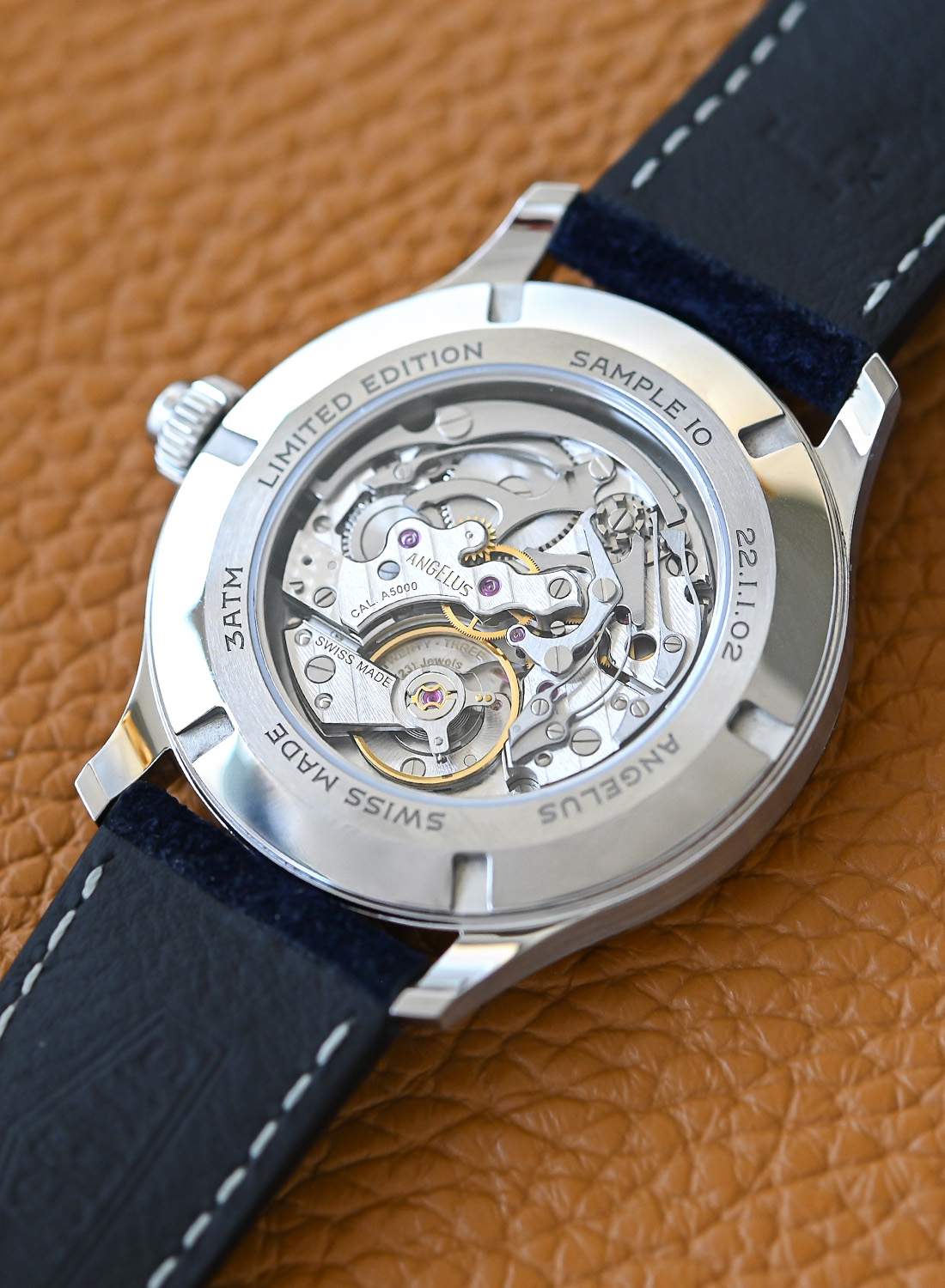
The origins of this calibre A5000 can traced back to the time when François-Paul Journe created in 1989 a joint company with Denis Flageollet and Vianney Halter, THA, responsible for the conception of several movements including a very particular hand-wound, monopusher chronograph known as the calibre 045MC, housed inside a handsome and highly praised watch, the 1999 Cartier Tortue Monopoussoir, part of the Collection Privée Cartier Paris (CPCP). Back in the day, Cartier was using the services of some of the best watchmakers in town, including Renaud and Papi who made the movements in the Tortue Tourbillon Chronograph Monopoussoir or the Tortue Minute Repeater.

THA or Techniques Horlogères Appliquées, based in Sainte-Croix, Switzerland, created movements and complication modules for several large brands. Journe and Flageollet worked together on the conception of a chronograph movement that would become the calibre 045MC for Cartier. The result is a watch that has become highly collectable, with a movement that has been praised for its beauty (less for its reliability…) and a style that came back recently in modern shape, but without this movement.

Let’s talk about the calibre 045MC. This movement is unusual on many levels. First, it uses a traditional yet refined conception that isn’t without minor flaws. Second, it relies on a rarely seen coupling system, the oscillating pinion, and not a horizontal clutch like many vintage hand-wound chronograph movements. Third, it is a monopusher with a single pusher into the crown, and not at 2 o’clock like often seen.
The men at THA didn’t start from the ground and the 045MC is essentially based on a Peseux movement modified to have the small seconds at 9 o’clock instead of 6 o’clock. Using this reliable and thin (2.5mm) base, known to be capable of enough torque to power complications, Journe and Flageollet worked on integrating a chronograph on the back side, using only an additional 1.7mm of space for the complication. This is where the oscillating pinion architecture came in handy, saving space while being effective – a solution invented and patented by Edouard Heuer in 1887. While not the noblest of coupling systems, the oscillating pinion is technically simple, effective in what it has to do (coupling the gear train of the base movement to the chronograph mechanism) and economical in space.

Having a Peseux gear train as a base, the 045MC was perfect for compact watches, but this also meant small-sized counters close to the central axis of the hand – which became slightly problematic when this movement later found its way into oversized watches. Nevertheless, the THA movement became as emblematic as the watch to house it. But its life didn’t end when Cartier stopped the production of the CPCP Tortue Monopoussoir.

FP Journe left Techniques Horlogères Appliquées in 1995 to later create TIM S.A. in Geneva but gave the rights to produce this movement to a company named Jacquet S.A. This is how an evolution of this movement found its way into the case of Bucherer, Ulysse Nardin or Baume et Mercier watches – as well as the De Bethune Monopoussoir Chronograph DB1 and DB8, created by ex-THA Denis Flageollet. It is also interesting to see that FP Journe’s modern hand-wound chronograph or Monopoussoir Rattrapante share the same base architecture.
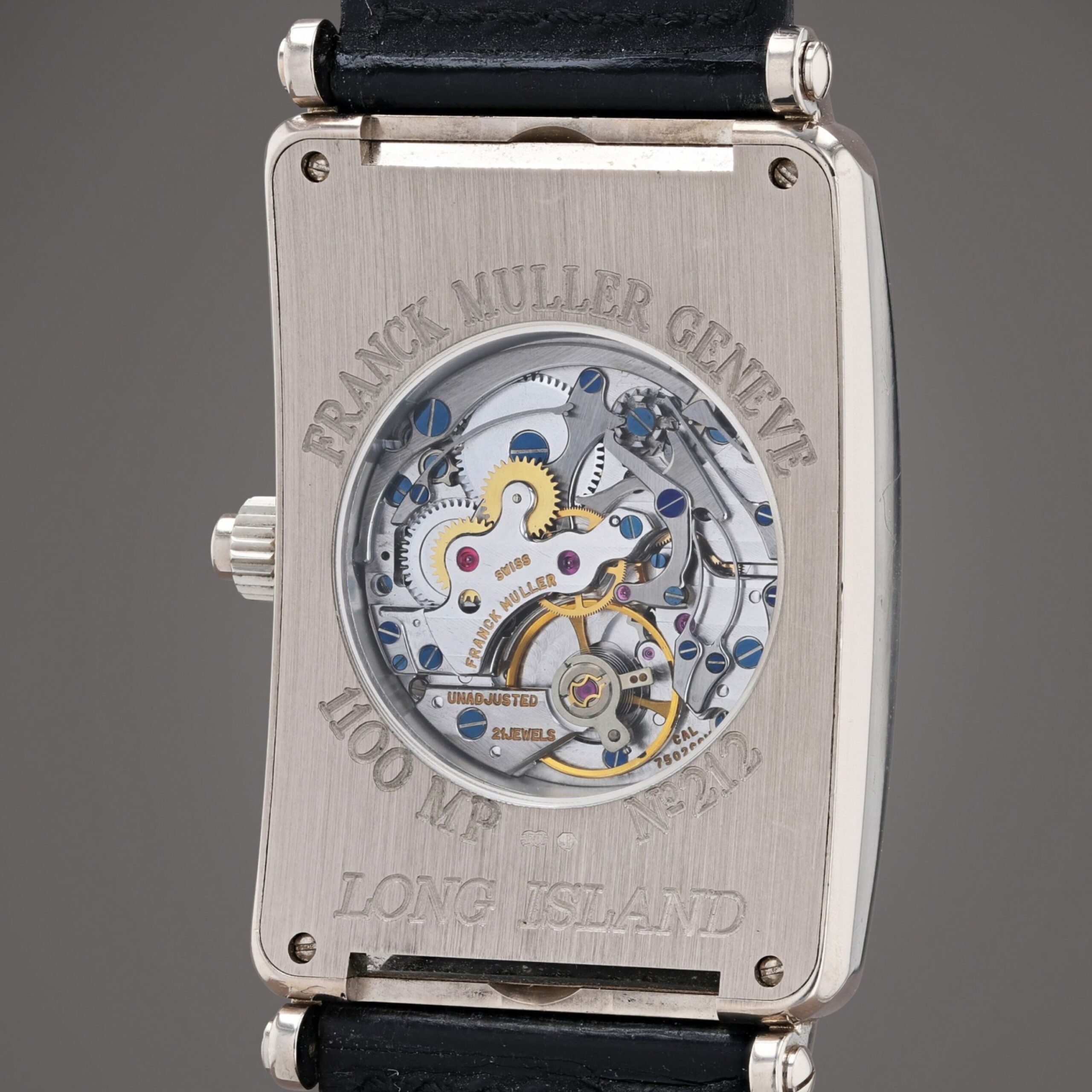
In the early 2000s, Jaquet S.A. changed owner and became La Joux-Perret, and this is how this movement conceived almost three decades ago found its way into the case of a modern Angelus watch. As you can see, the Calibre A5000 of La Joux-Perret isn’t a simple copy of the THA 045MC movement and has undergone several evolutions, the most obvious being the size (24mm vs. 25.6mm) but also some modifications to the chronograph mechanism, resulting in movements that are visually and mechanically quite different.
The movement now known as the Calibre A5000 retains most of the elements of the classic architecture described above, knowing a compact timekeeping base running at 3Hz, with now 23 jewels in total and a 42h power reserve. The oscillating pinion coupling is also still in use. And surely, the power reserve is rather short and the dimensions are not particularly suited for modern watches, but I don’t really care… What’s important for us is that it is a traditionally-looking, hand-wound and very thin movement with pedigree and refinement. And I particularly like the use of a crown-integrated pusher for the chronograph, giving the watch a sleek look.
Looking at the movement through the caseback, you’re first treated with a classic layout. In an era of automatic chronograph movements with a vertical clutch that leaves no space for imagination, it is simply delightful to look at this calibre. All gears, levers, springs and the column wheel are clearly visible. The finishing is also appealing, with bevelled bridges, Geneva stripes, chamfered levers with straight-grained surfaces, circular-grained golden wheels and polished screws. Traditional, not overly demonstrative, elegant. All in all, I just want to applaud Angelus and La Joux-Perret to keep producing such a movement, when the norm seems to be modern chronographs that are certainly efficient and mechanically advanced, but often result in thick watches.
Availability & Price
The Angelus Instrument de Vitesse is released in a limited edition of 25 pieces per colourway, and priced at CHF 17,100 (incl. taxes). I would not call this accessible, but it feels quite justified too by the finesse of the entire watch.
For more details, please visit angelus-watches.com.

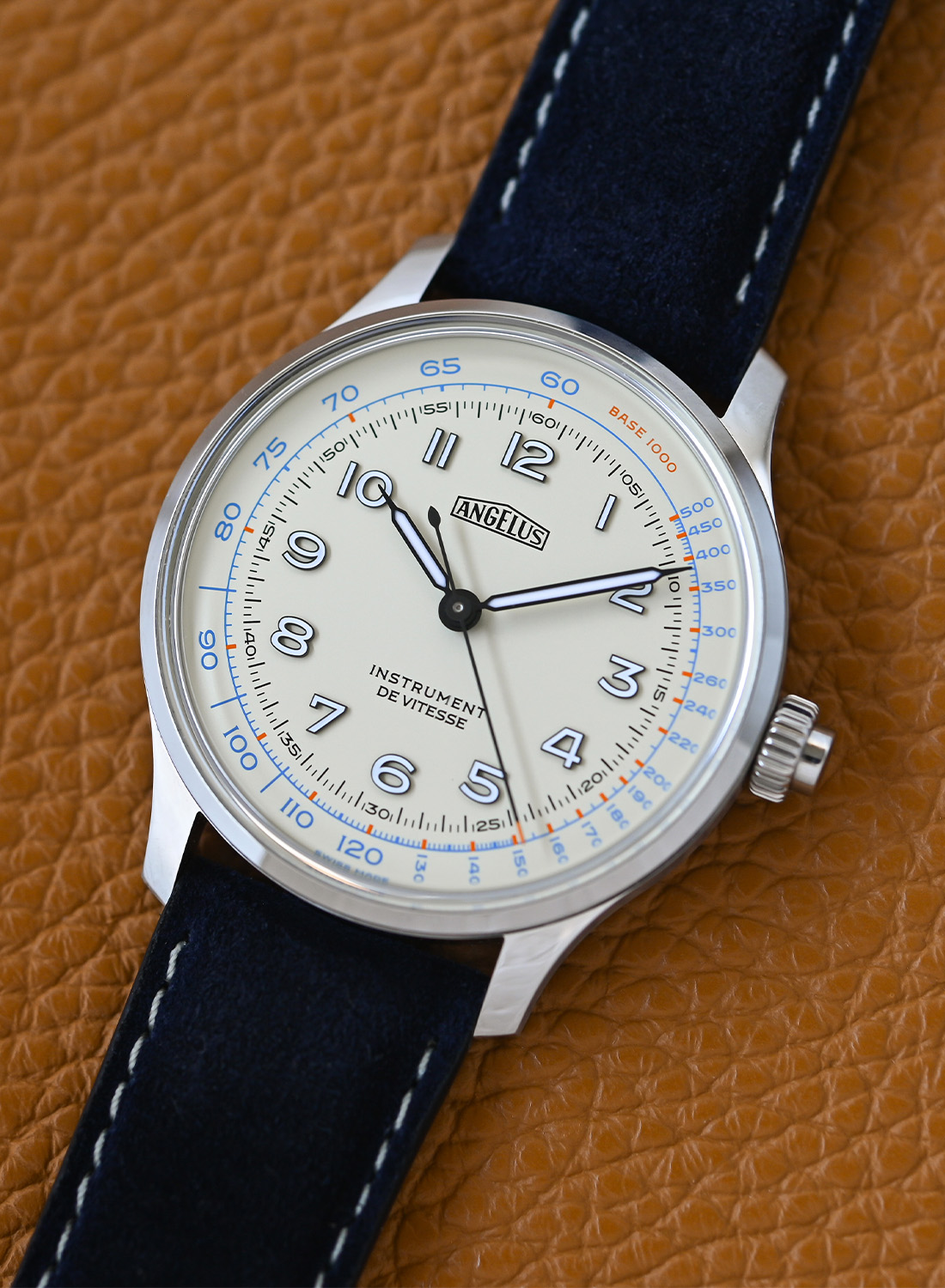
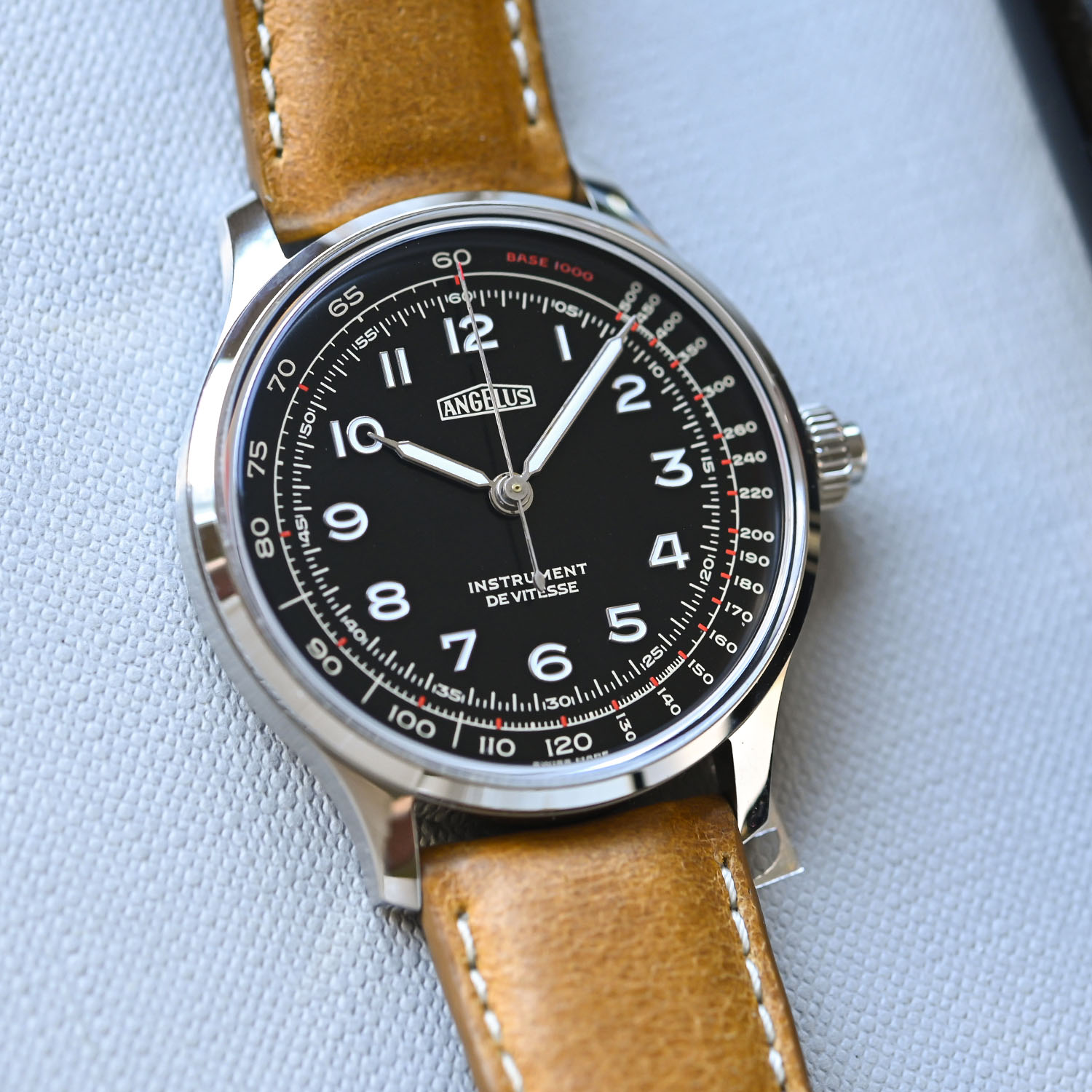
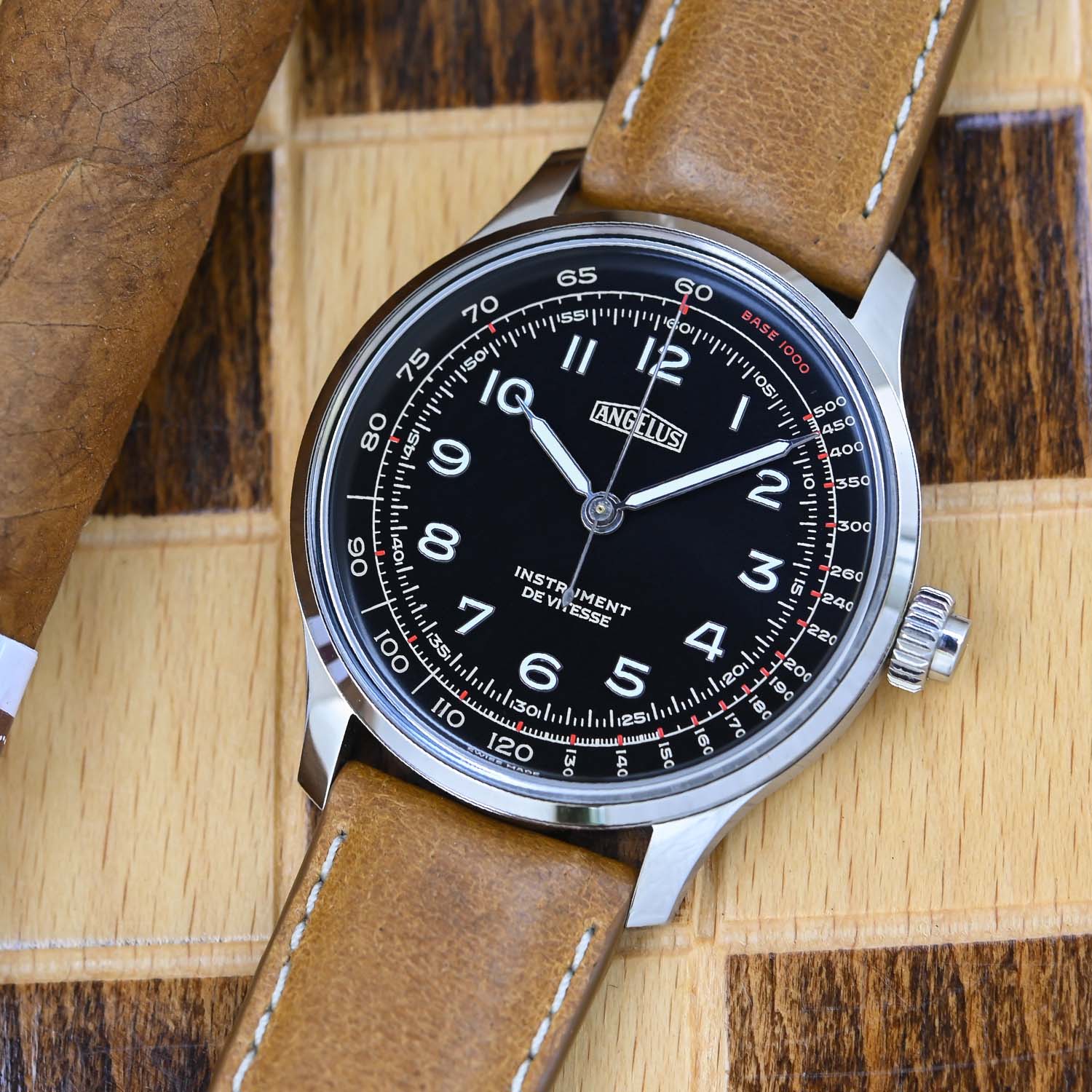
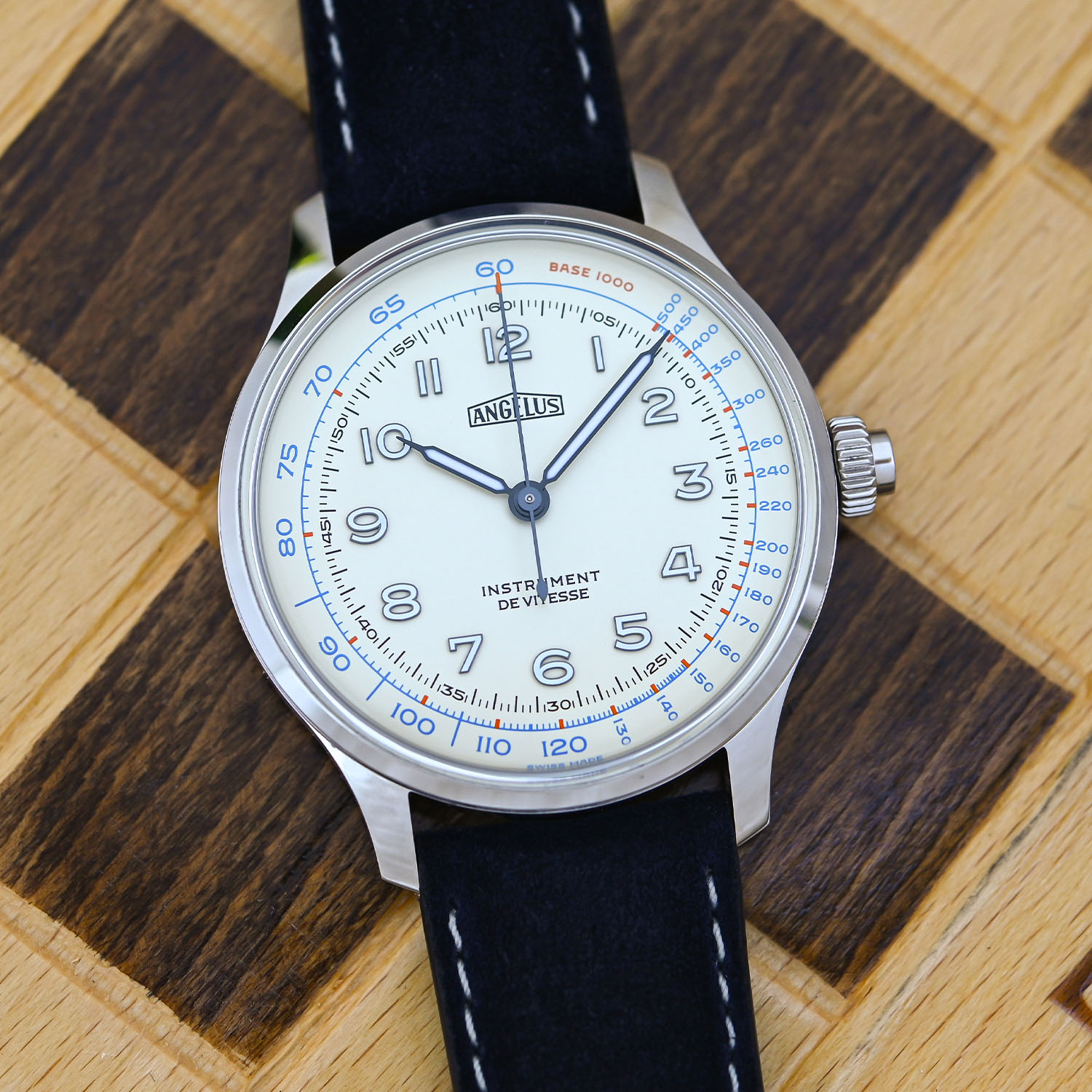
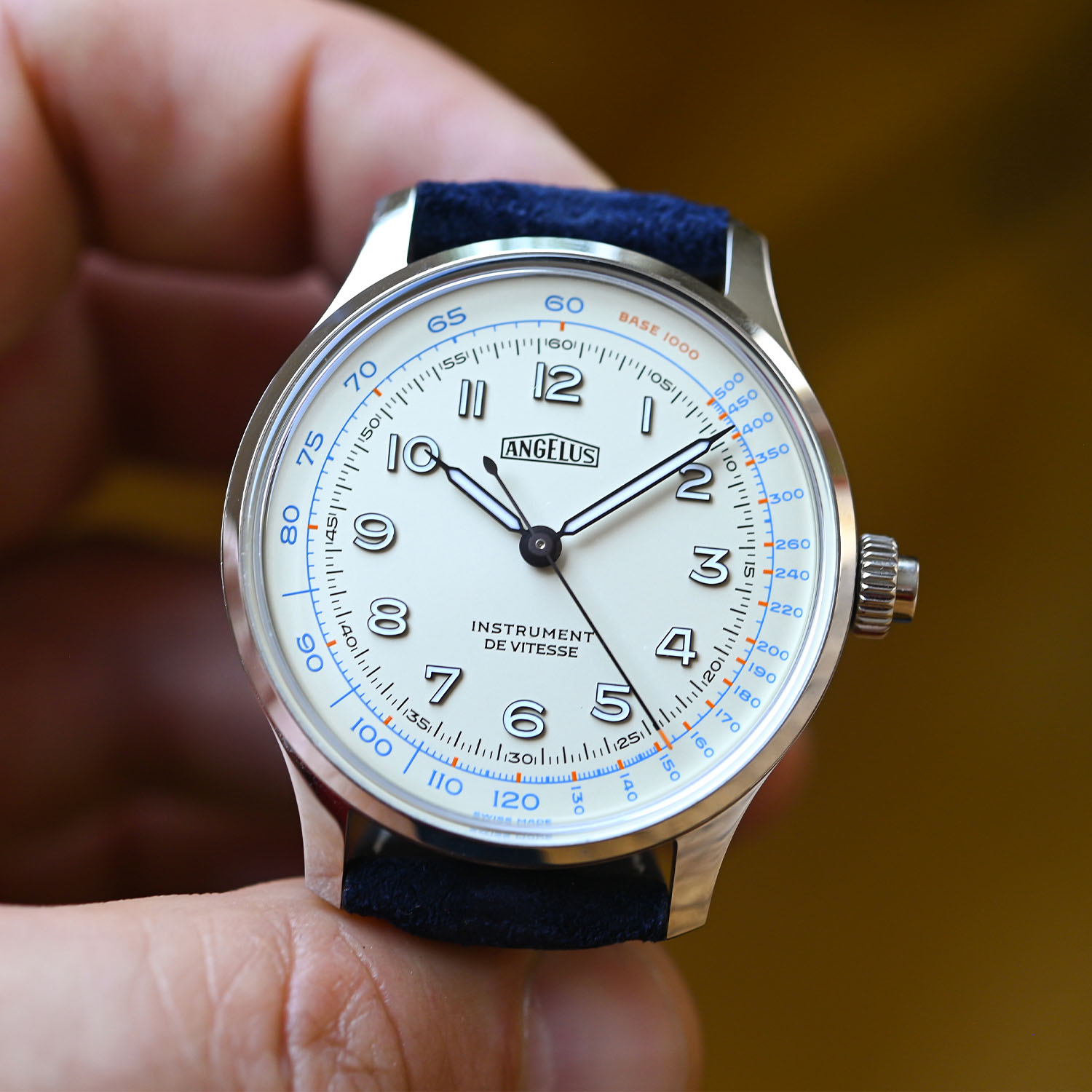
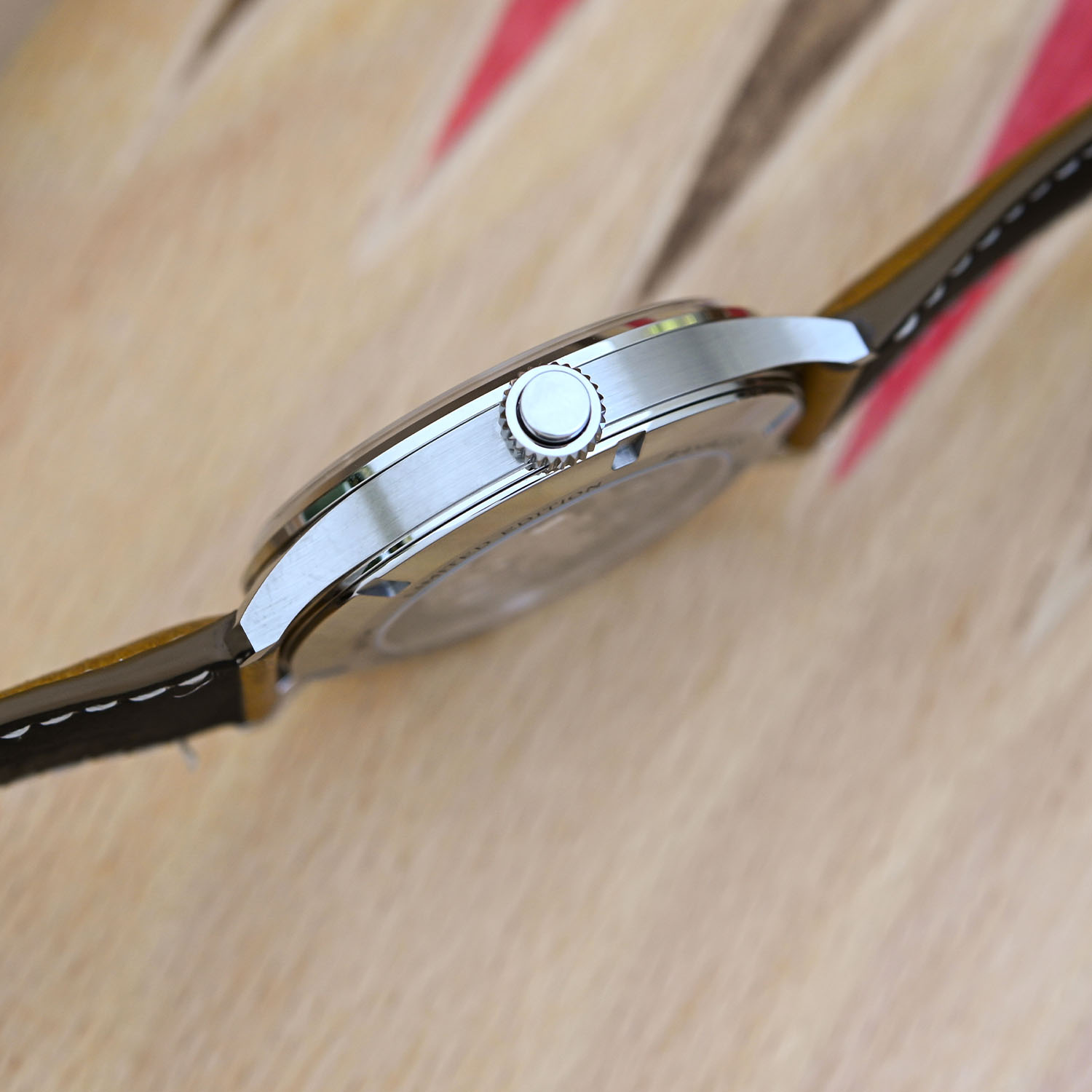
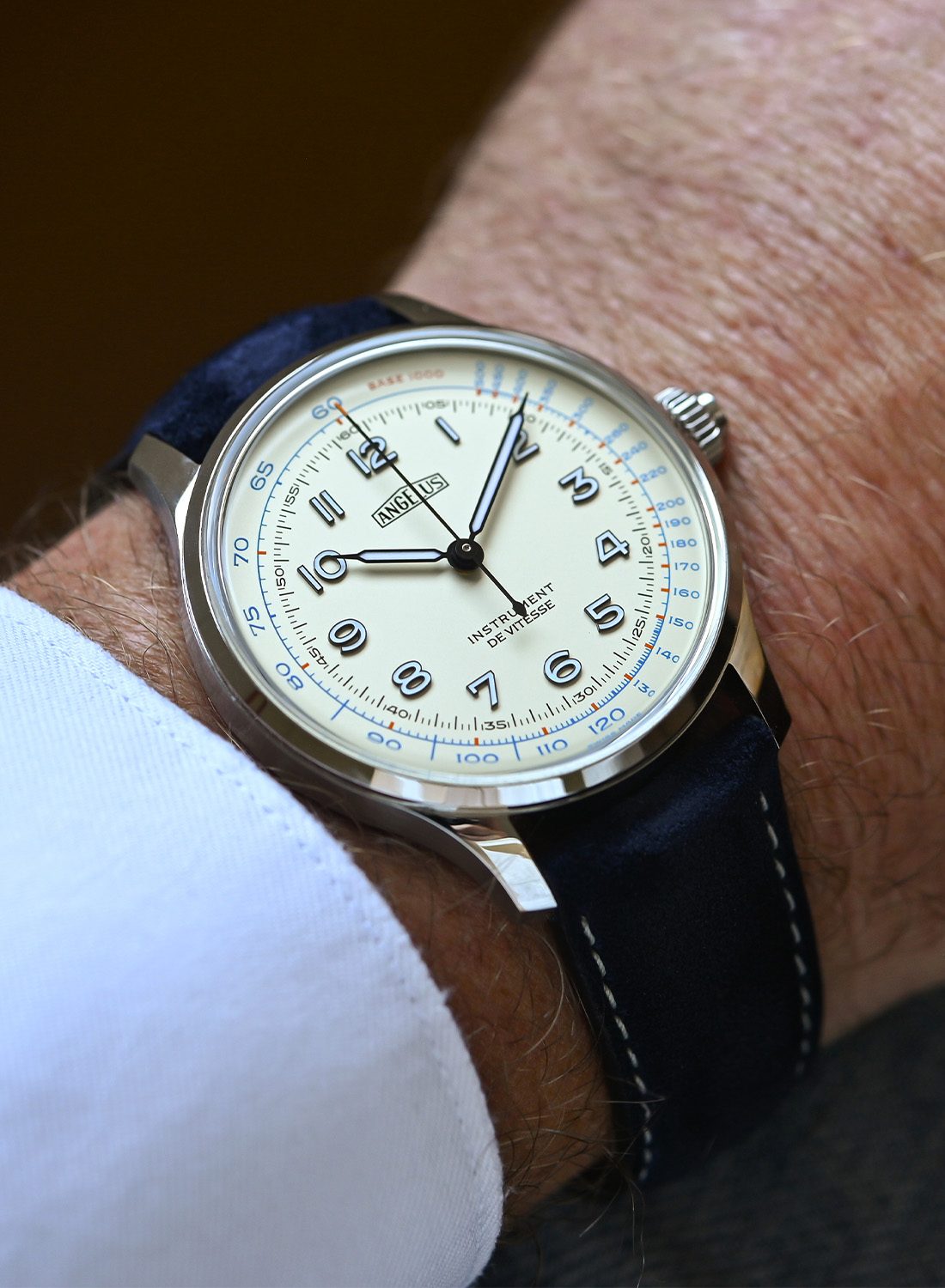
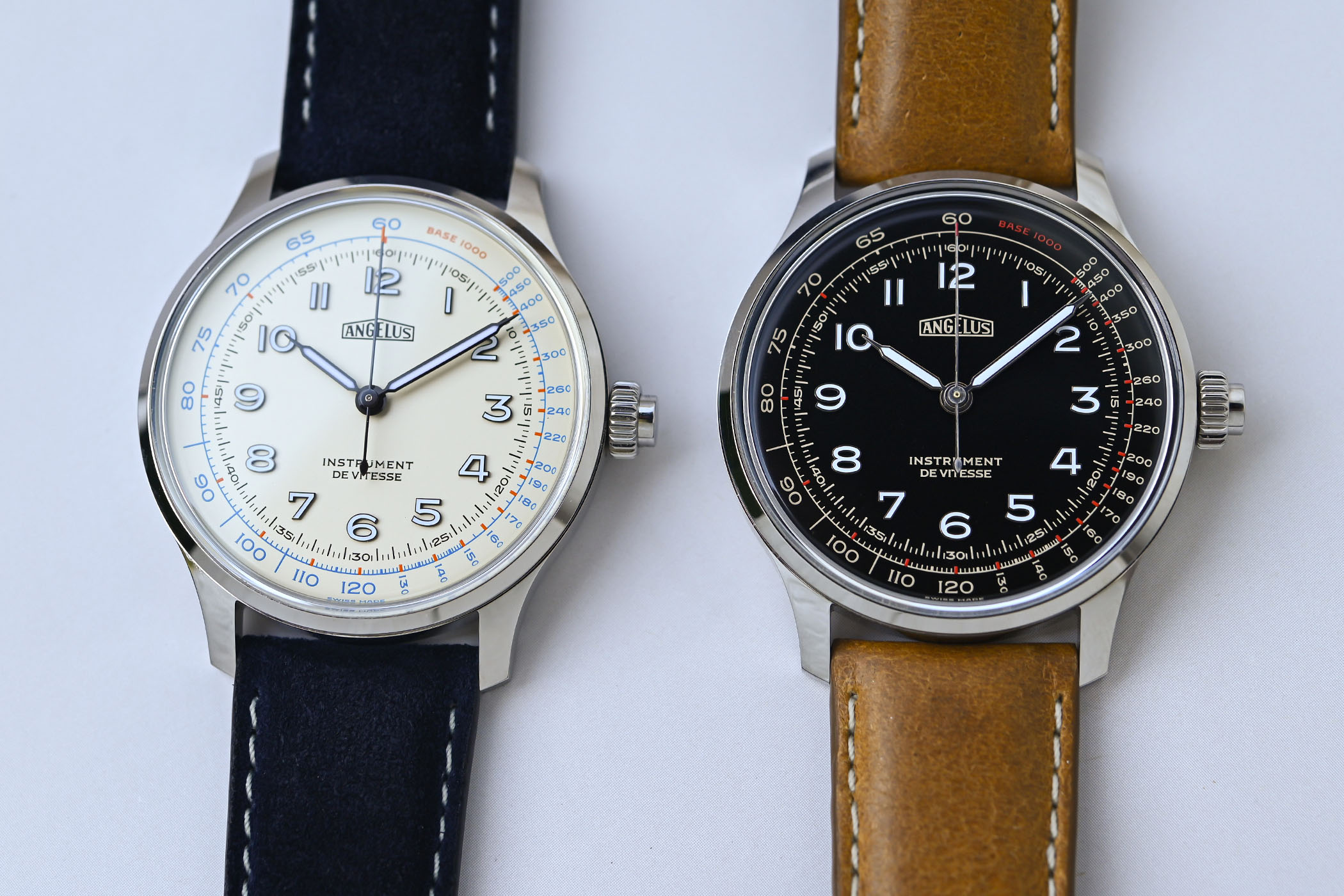
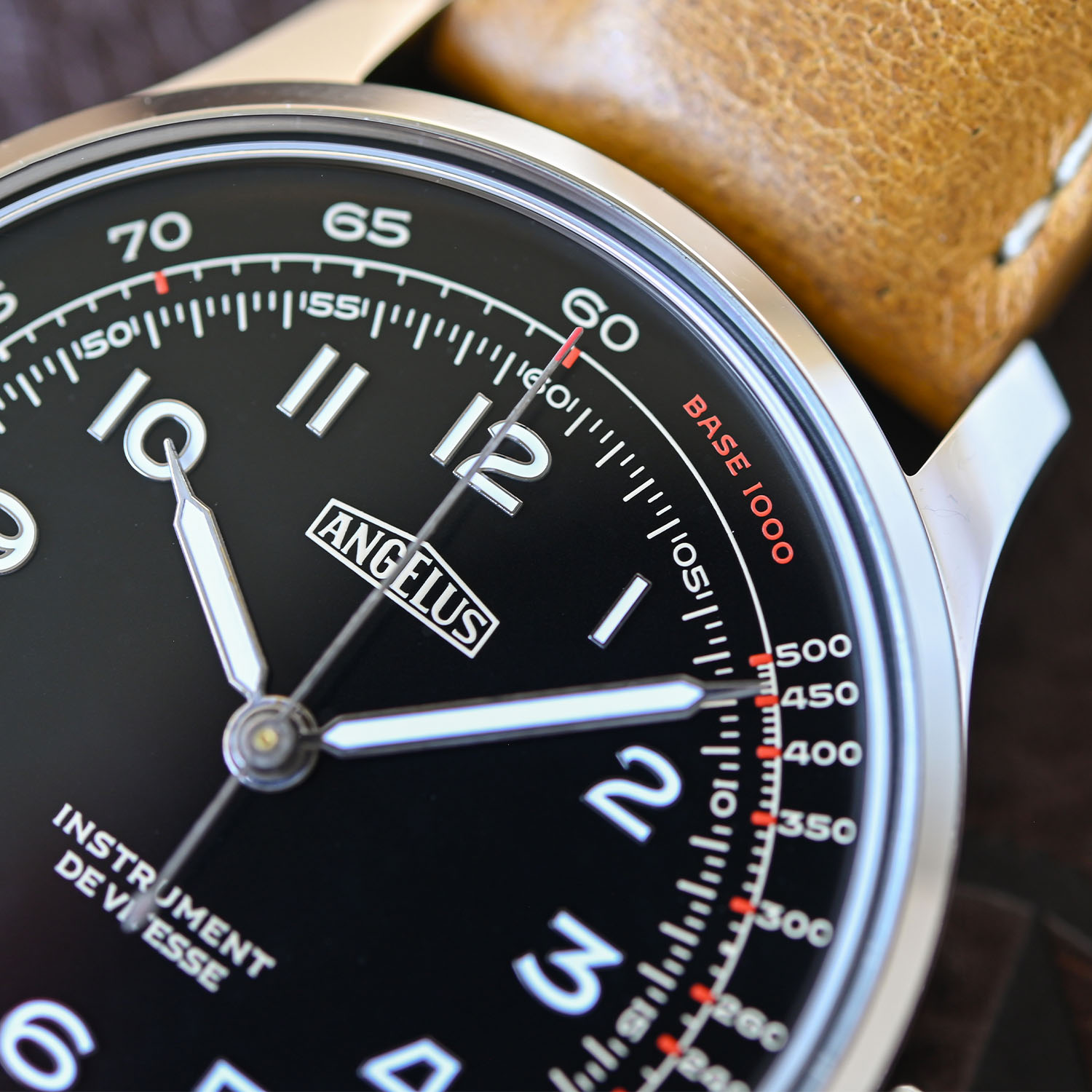
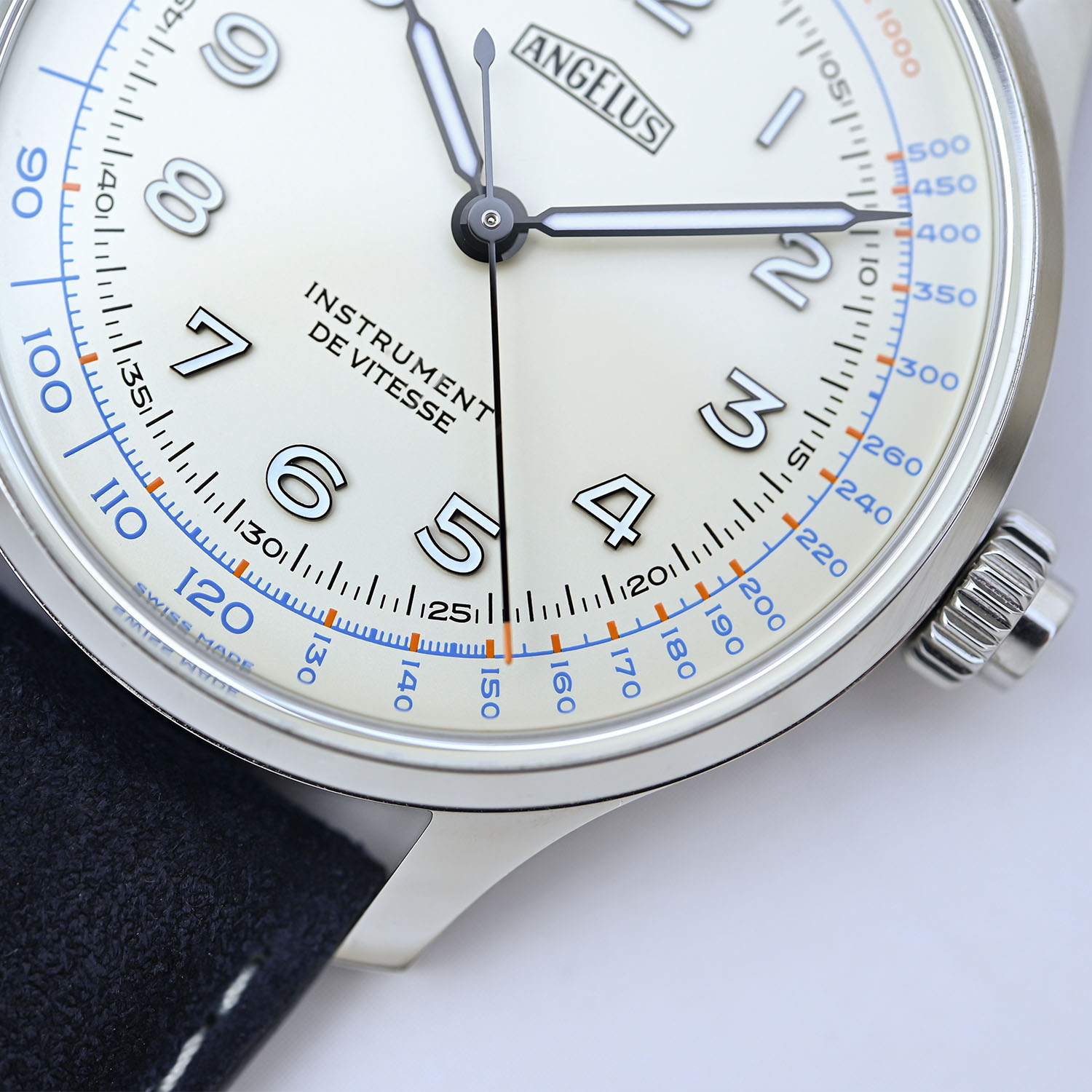
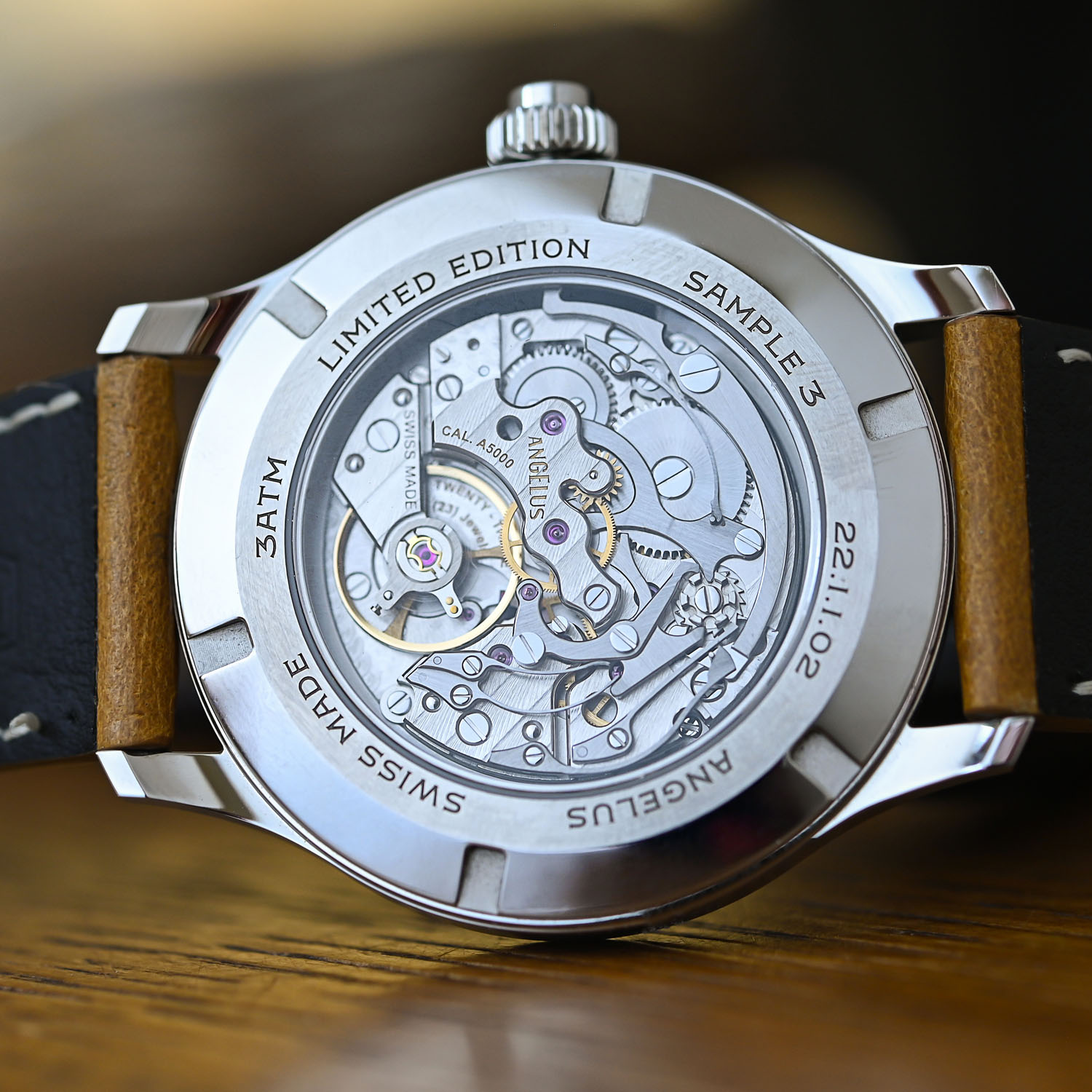
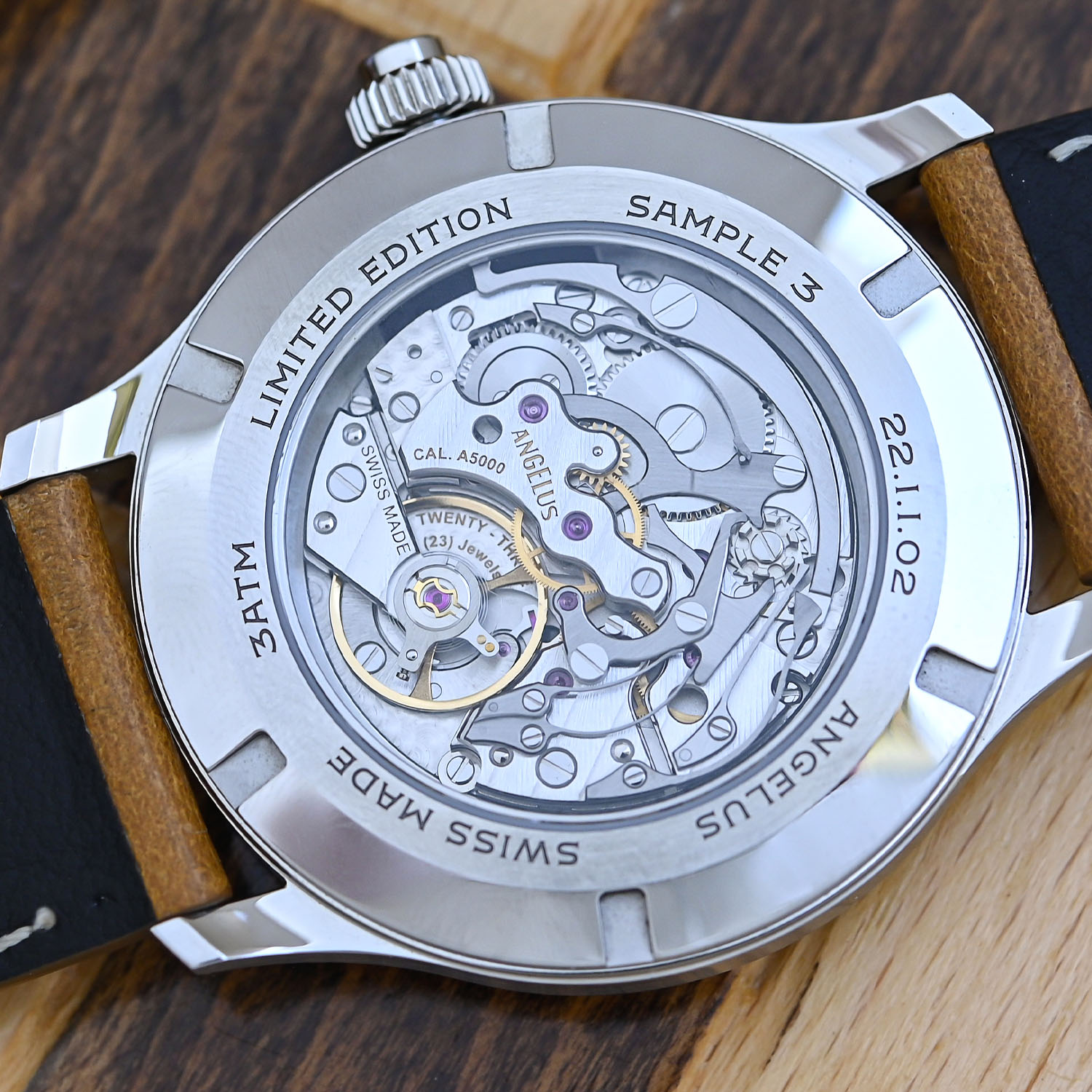
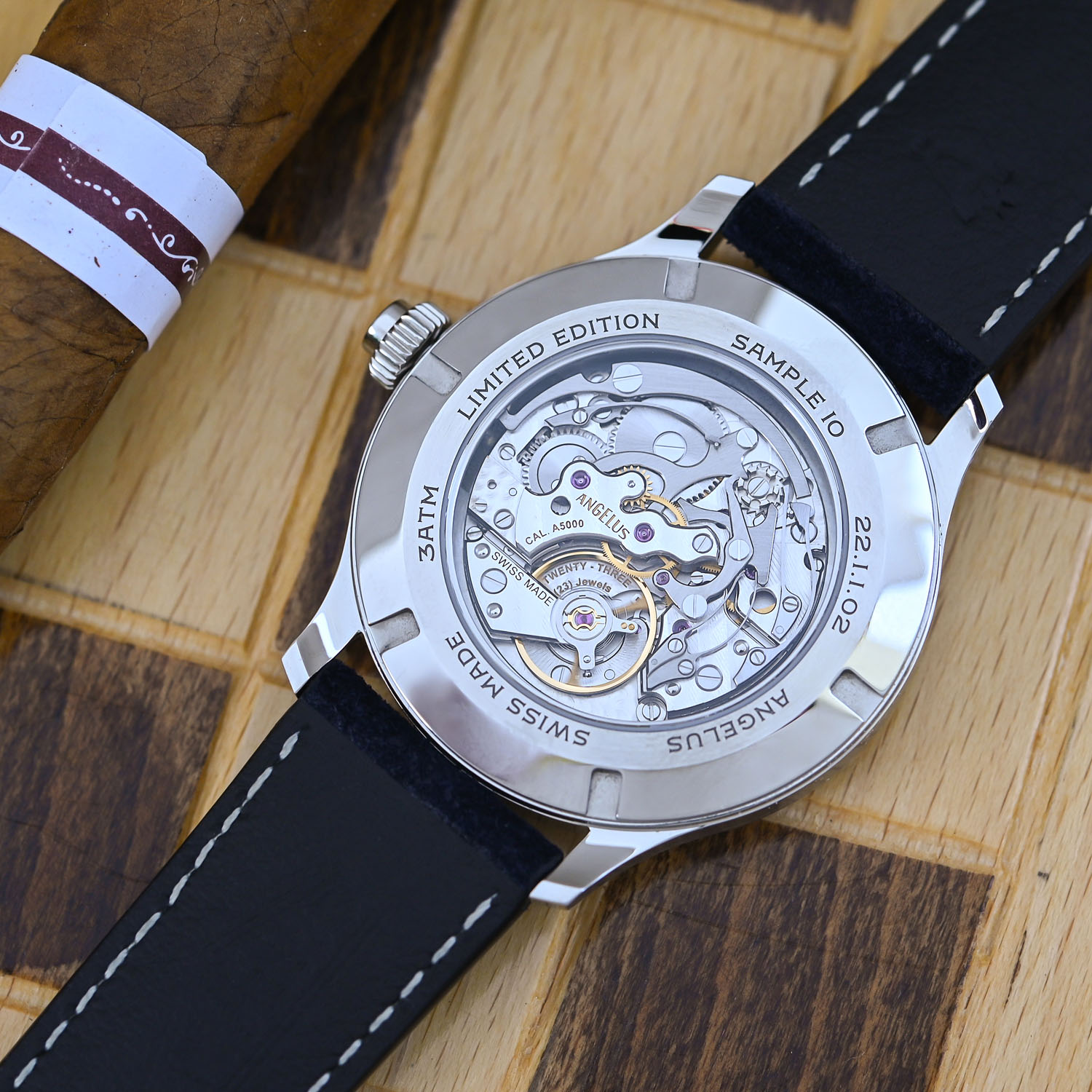
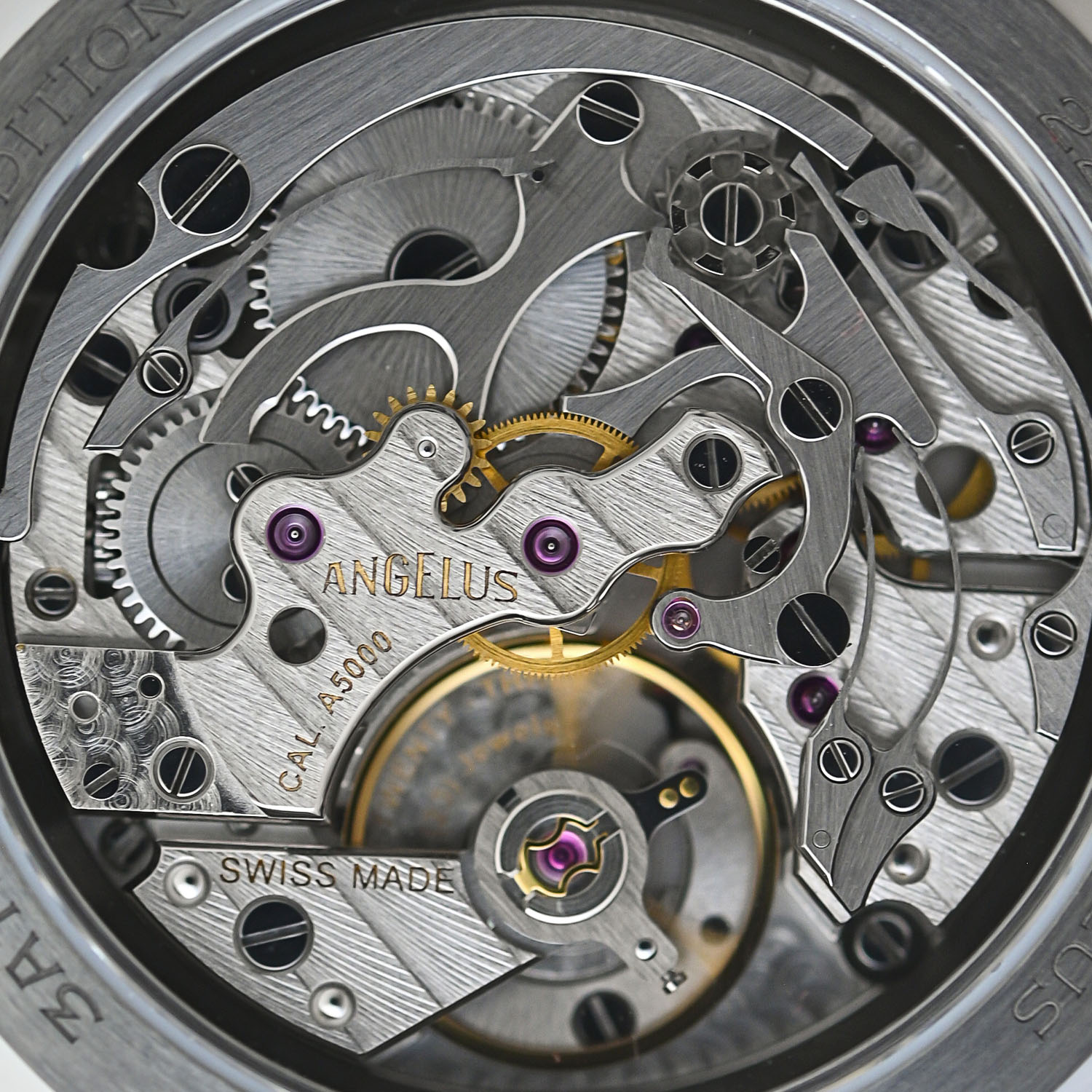
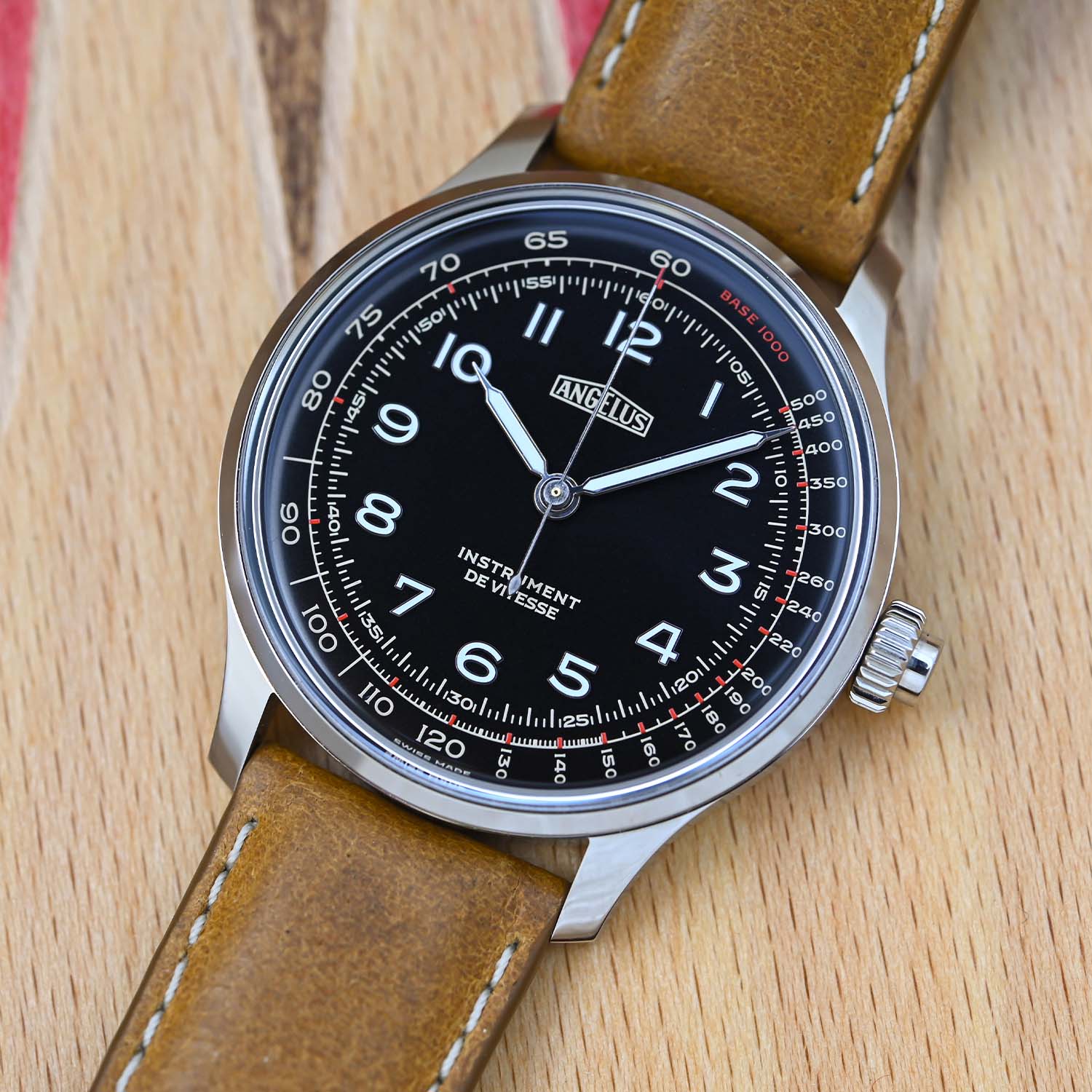



5 responses
Me like
Fantastic!
I love the ivory version. Special looking watch. Clean, sharp, and the dimension are phenomenal. It’s almost impossible on first glance to notice that this is a chronograph, which is also a huge plus. Stealth.
WOW WOW IMHO, this is what real horology reporting is all about! I can’t stop reading this article over and over again! The history. The who’s who. The where it all started. Peeling layer after layer of horology history and knowledge like unearthing a treasure! I love it! Well done! Keep them coming please!
Wonderful article. Wonderful watch.